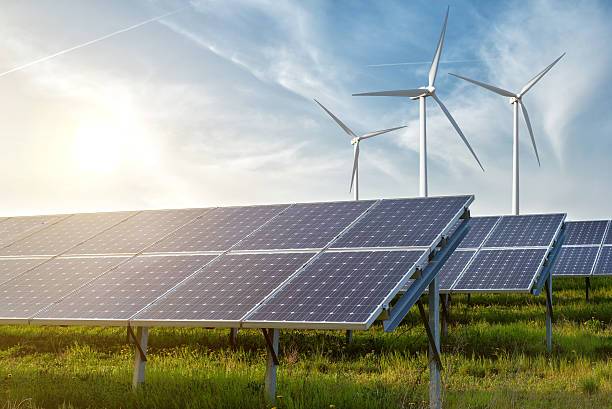Renewable energy sources have gained significant traction in recent years as we strive to reduce our carbon footprint and mitigate climate change. Among the technologies that support the integration and optimization of renewable energy, smart grid technology plays a crucial role. This article explores how smart grid technology is advancing the adoption and efficiency of renewable energy, revolutionizing the way we generate, distribute, and consume electricity.
1. Grid Integration of Renewable Energy Sources:
Smart grid technology enables the seamless integration of renewable energy sources into the existing power grid. With traditional power grids, integrating intermittent renewable energy can be challenging. However, smart grids leverage advanced monitoring, control, and communication systems to balance supply and demand dynamically. This allows for the efficient integration of renewable energy sources like solar and wind power, reducing reliance on fossil fuels and promoting a cleaner and more sustainable energy mix.
2. Real-Time Monitoring and Control:
Smart grids employ advanced sensors, meters, and communication networks to monitor and control energy production and consumption in real-time. This granular level of monitoring enables utilities and grid operators to optimize energy distribution and balance the load across different areas. By leveraging real-time data, smart grids can respond quickly to fluctuations in renewable energy production, ensuring grid stability and reliable power supply.
3. Demand Response and Energy Management:
Smart grid technology empowers consumers to actively participate in managing their energy consumption through demand response programs. These programs incentivize users to adjust their energy usage during peak demand periods or when renewable energy generation is high. By shifting energy-intensive activities to off-peak hours, consumers can help balance the load on the grid, reduce strain on fossil fuel-based power plants, and maximize the utilization of renewable energy resources.
4. Distributed Energy Resources and Microgrids:
Smart grids facilitate the integration and management of distributed energy resources (DERs) such as rooftop solar panels and small wind turbines. By connecting these DERs to the grid, excess energy can be fed back into the system, reducing reliance on centralized power plants. Furthermore, smart grid technology enables the creation of microgrids, localized energy systems that can operate independently or in conjunction with the main grid. Microgrids with renewable energy sources enhance energy resilience, especially during grid outages or emergencies.
5. Energy Storage and Grid Flexibility:
The intermittent nature of renewable energy sources can be addressed by incorporating energy storage systems within smart grids. Energy storage technologies, such as batteries, enable the capture and storage of excess renewable energy for later use when demand is high or when renewable energy generation is low. This enhances grid flexibility, reduces curtailment of renewable energy, and enables a more stable and reliable power supply.
6. Data Analytics and Predictive Maintenance:
Smart grid technology leverages data analytics and machine learning algorithms to gain insights into energy consumption patterns, forecast demand, and identify areas for optimization. Utilities can use these analytics to plan and optimize renewable energy generation, make informed investment decisions, and improve the overall efficiency of the grid. Furthermore, predictive maintenance algorithms can help identify potential equipment failures, allowing proactive maintenance and reducing downtime.
7. Empowering Energy Consumers:
Smart grid technology enables energy consumers to actively participate in the energy market and make informed decisions about their energy usage. With smart meters and real-time energy data, consumers can monitor their energy consumption, track costs, and adjust their behavior to align with their sustainability goals. This empowers consumers to become more energy-conscious, leading to reduced energy wastage and increased adoption of renewable energy solutions.
Conclusion:
Smart grid technology is revolutionizing the integration, management, and optimization of renewable energy sources within our power grids. By enabling real-time monitoring, demand response programs, and the integration of distributed energy resources, smart grids maximize the efficiency and reliability of renewable energy generation. As we continue to transition towards


